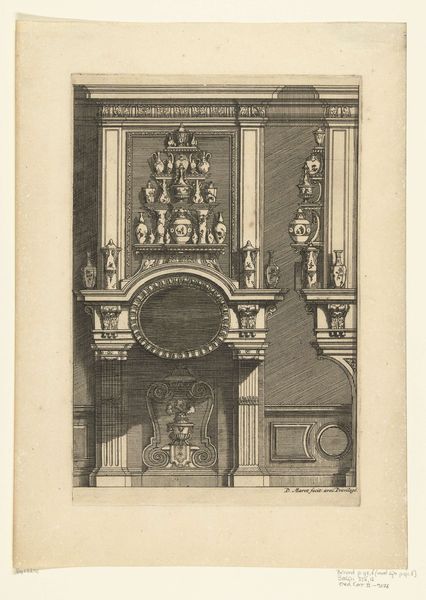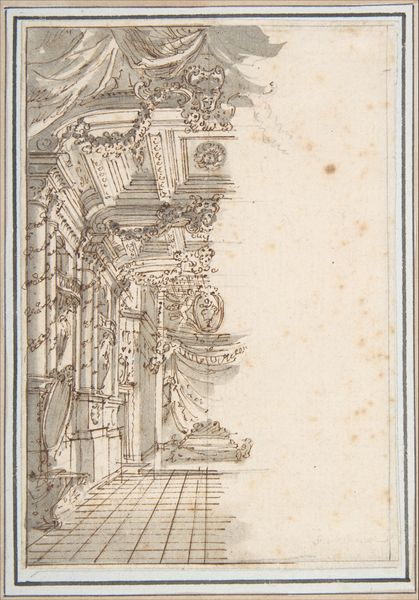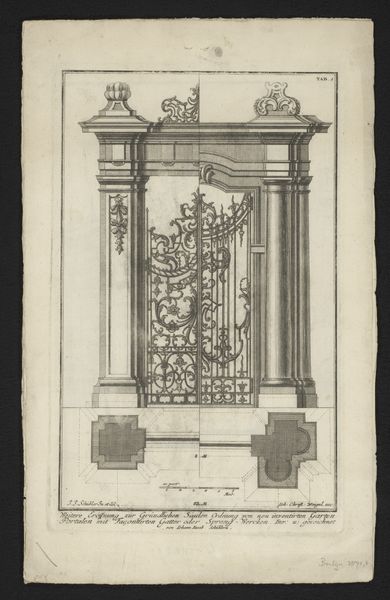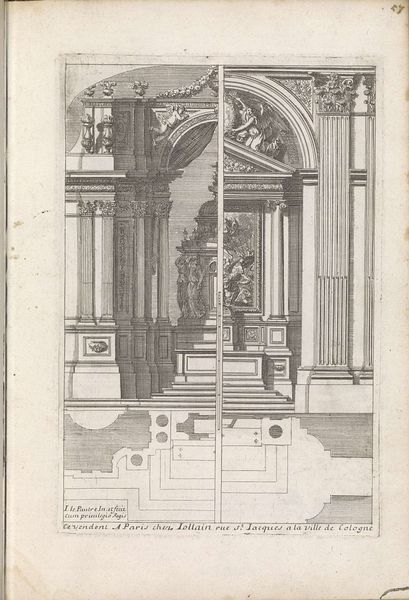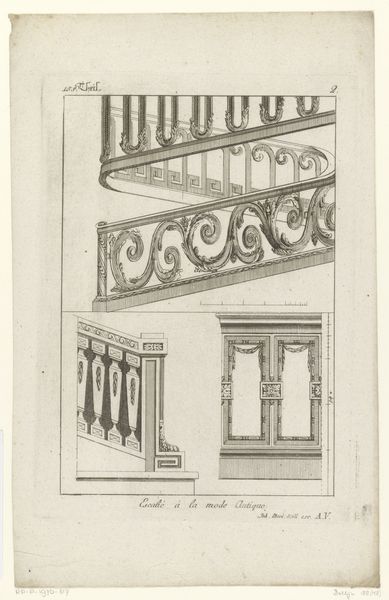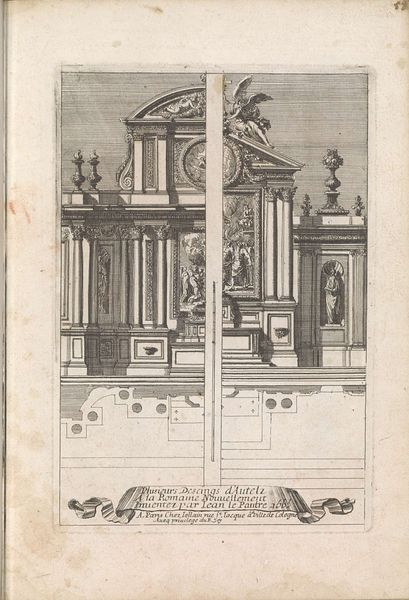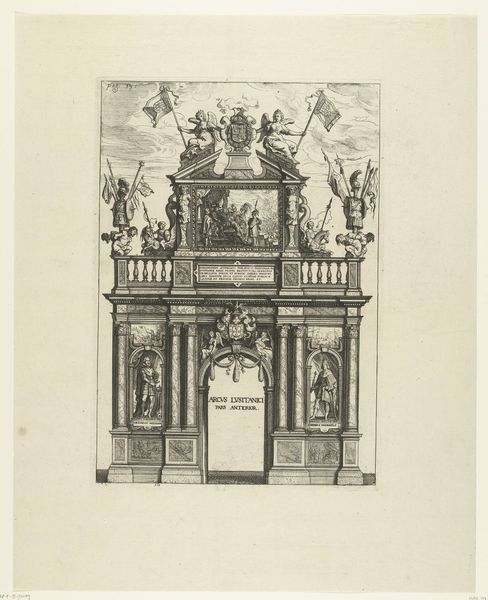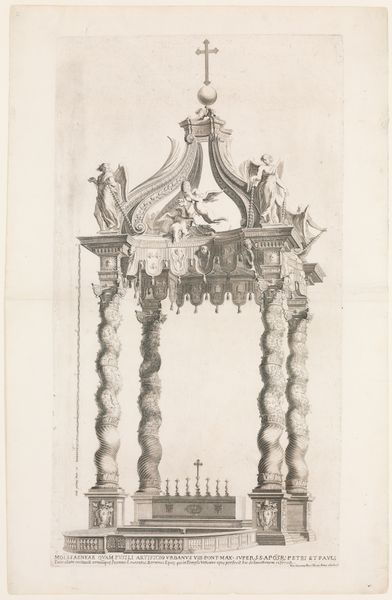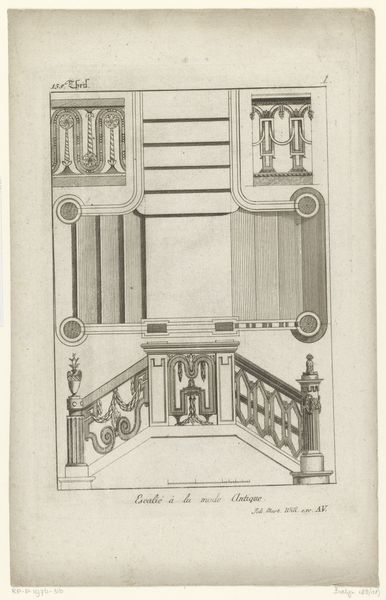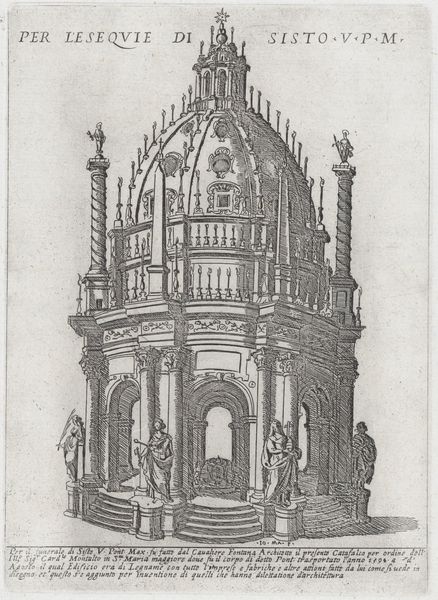
drawing, print, ink, engraving, architecture
#
drawing
#
baroque
#
pen drawing
# print
#
pen sketch
#
old engraving style
#
hand drawn type
#
form
#
personal sketchbook
#
ink
#
ink drawing experimentation
#
geometric
#
pen-ink sketch
#
pen work
#
sketchbook drawing
#
decorative-art
#
sketchbook art
#
engraving
#
architecture
Dimensions: height 267 mm, width 193 mm
Copyright: Rijks Museum: Open Domain
Curator: This is "Three Balustrades and Four Masks," an engraving and etching by Daniël Marot, dating back to 1712. It's part of the Rijksmuseum's collection. Editor: It strikes me immediately as an exercise in elegant constraint. The stark black lines against the off-white ground create a visually striking tension, like wrought iron holding back a flood of ornamental impulse. Curator: Precisely. Marot was a pivotal figure in introducing French Baroque design to the Netherlands and later England. These prints served as templates for craftsmen, standardizing a certain aesthetic among the artisan class and elite patrons of the time. The architecture literally became the stage for royal theater, fashioning public spaces into stages. Editor: It's a peek into the designer's material considerations. You can see the repetitive labor that informed such large structures and commissioned architectural work. The hand creating those details over and over –that’s a whole system of skill being valued, of artisanal manufacturing taking place. Curator: And that level of detail speaks volumes about social standing. Baroque architecture in this way declared who was wealthy enough to afford all this flourish and ornament, solidifying visibility to certain demographics, especially at court. Editor: Absolutely, though, at the same time, this kind of printmaking served to disseminate those high styles further. The etching as medium put designs like these into circulation. It’s a paradox of exclusivity and distribution. It’s a drawing that, in itself, creates possibility through technical ability. Curator: Right. And think about who controlled the means of production. Guilds, royal workshops... all tightly managed to control the style and, in a way, the visual language of power. The masks at the base almost become allegorical commentators on the performances enacted within these spaces. Editor: Looking at it now, that dark contrast highlights that dichotomy you just mentioned. The stark black railing with those masks, gives way to ideas about consumption habits and decorative aesthetics in public life. Thank you for sharing your perspective. Curator: Thank you. Considering how architectural designs shape societal power structures opens a window to better understandings about our cultural heritage and its effect on social values.
Comments
No comments
Be the first to comment and join the conversation on the ultimate creative platform.

